Grow French Beans like a pro, even if you think you have a black thumb! Have you ever dreamed of stepping outside your back door and harvesting a basketful of crisp, delicious French beans, ready for a summer salad or a quick sauté? I know I have! And let me tell you, it’s easier than you think. This isn’t just about planting seeds; it’s about unlocking the secrets to a thriving bean patch, right in your own backyard.
Beans, including French beans, have a rich history, dating back thousands of years. They’ve been a staple crop in cultures around the world, providing essential nutrients and playing a vital role in sustainable agriculture. From ancient civilizations to modern-day gardens, beans have always been a symbol of abundance and nourishment.
But why should you bother learning how to grow French beans? Well, store-bought beans simply can’t compare to the flavor and freshness of homegrown ones. Plus, gardening is a fantastic way to connect with nature, reduce stress, and enjoy the satisfaction of nurturing something from seed to harvest. And let’s be honest, who doesn’t love saving a little money on groceries? In this article, I’m going to share some simple yet effective DIY tricks and hacks that will help you cultivate a bountiful crop of French beans, even if you’re a complete beginner. Get ready to roll up your sleeves and get your hands dirty – it’s time to grow some magic!
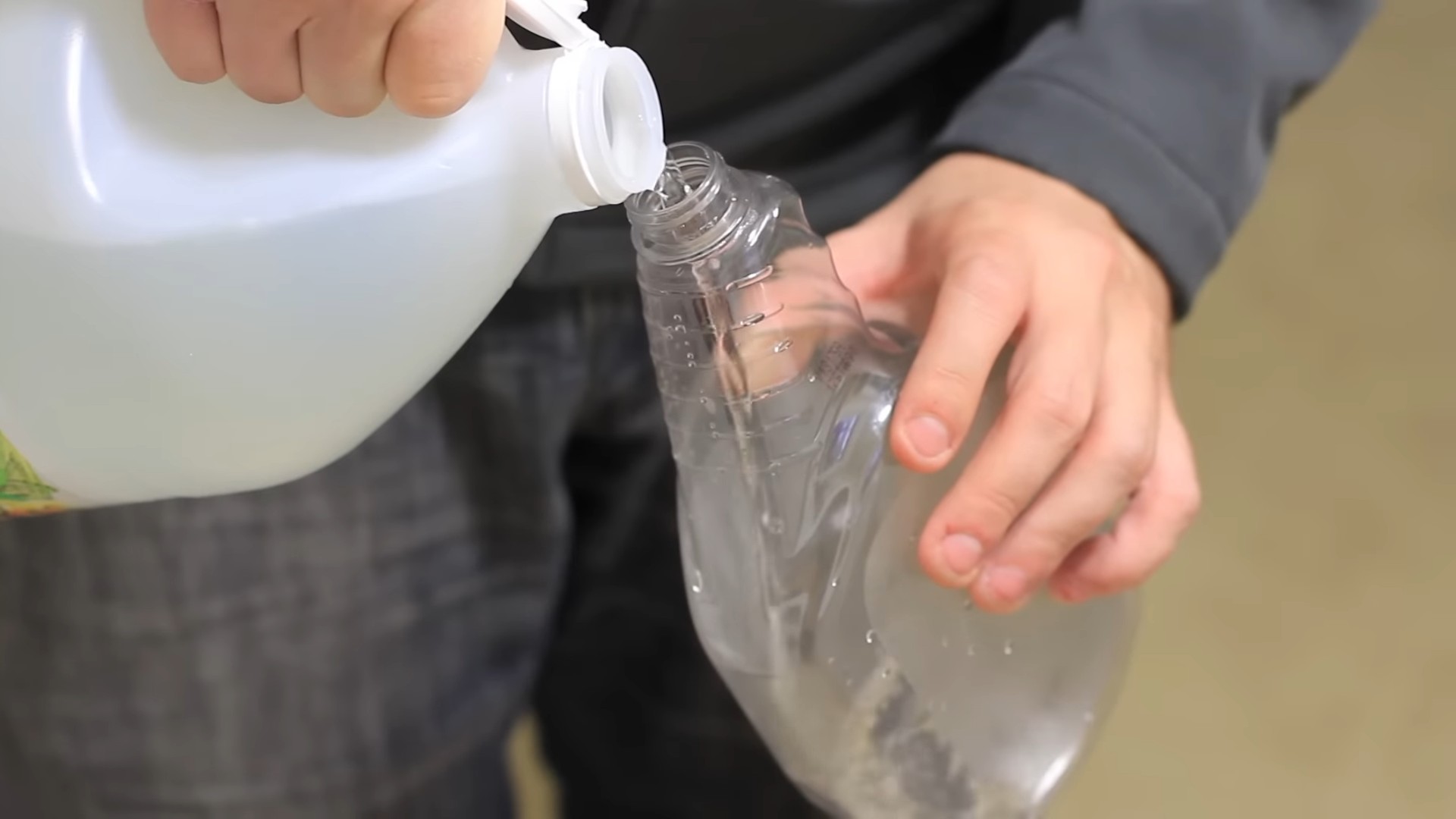
Growing French Beans: A Beginner’s Guide to Bountiful Harvests
Hey there, fellow gardening enthusiasts! I’m so excited to share my experience growing French beans. They’re surprisingly easy to cultivate, even if you’re a complete newbie like I was a few years ago. Plus, nothing beats the taste of fresh, homegrown beans straight from the garden! This guide will walk you through every step, from choosing the right variety to harvesting your delicious crop.
Choosing Your French Bean Variety
First things first, let’s talk about varieties. French beans come in two main types: bush beans and pole beans.
* **Bush Beans:** These are compact and don’t need support. They’re perfect if you have limited space or prefer a lower-maintenance option. They produce a large harvest all at once, which is great for canning or freezing. Popular bush bean varieties include ‘Blue Lake Bush’, ‘Contender’, and ‘Provider’.
* **Pole Beans:** These are climbing beans that need a trellis or other support to grow. They produce beans over a longer period, so you’ll have a steady supply throughout the season. Pole beans tend to be more productive overall. Some popular pole bean varieties are ‘Kentucky Wonder’, ‘Blue Lake Pole’, and ‘Scarlet Runner’. (Note: Scarlet Runner beans are also ornamental, with beautiful red flowers!)
I personally love growing both, but if you’re just starting out, I recommend trying a bush bean variety. They’re super easy and rewarding!
Preparing Your Garden Bed
French beans need a sunny spot with well-drained soil. Aim for at least 6-8 hours of sunlight per day.
* **Soil Testing:** Before you start, it’s a good idea to test your soil’s pH. French beans prefer a slightly acidic to neutral pH of around 6.0 to 7.0. You can buy a soil testing kit at most garden centers.
* **Soil Amendment:** Amend your soil with compost or well-rotted manure to improve drainage and fertility. I usually add a generous layer of compost a few weeks before planting.
* **Weed Removal:** Clear the area of any weeds and grass. Weeds compete with your beans for nutrients and water.
* **Tilling/Digging:** Loosen the soil to a depth of about 12 inches. This will help the bean roots grow easily.
Planting Your French Beans
Now for the fun part – planting! French beans are warm-season crops, so wait until the danger of frost has passed before planting. Soil temperature should be at least 60°F (15°C).
1. **Direct Sowing:** French beans are best sown directly into the garden. They don’t transplant well.
2. **Spacing:** For bush beans, sow seeds about 1-2 inches deep and 2-4 inches apart in rows that are 18-24 inches apart. For pole beans, plant seeds 1-2 inches deep at the base of your trellis or support structure, spacing them about 4-6 inches apart.
3. **Watering:** Water the soil thoroughly after planting. Keep the soil consistently moist until the seeds germinate.
4. **Germination:** French bean seeds usually germinate within 5-10 days, depending on the soil temperature.
Caring for Your French Beans
Once your beans have sprouted, it’s important to provide them with the right care to ensure a healthy and productive harvest.
* **Watering:** Water regularly, especially during dry spells. French beans need about 1 inch of water per week. Avoid overhead watering, as this can promote fungal diseases. Soaker hoses or drip irrigation are ideal.
* **Weeding:** Keep the area around your beans free of weeds. Hand-pull weeds carefully to avoid disturbing the bean roots.
* **Fertilizing:** French beans don’t need a lot of fertilizer, but a side dressing of compost or a balanced fertilizer a few weeks after planting can help boost growth. Avoid fertilizers high in nitrogen, as this can promote leafy growth at the expense of bean production.
* **Pest Control:** Keep an eye out for common bean pests like aphids, bean beetles, and slugs. I prefer to use organic pest control methods whenever possible. Insecticidal soap can be effective against aphids, and hand-picking bean beetles can help keep them under control. Slug bait can help protect your beans from slugs.
* **Supporting Pole Beans:** If you’re growing pole beans, make sure they have adequate support. Trellises, fences, or even teepees made of bamboo poles work well. As the beans grow, gently guide them onto the support structure.
Harvesting Your French Beans
Harvesting is the most rewarding part of growing French beans!
1. **Timing:** Harvest your beans when they are young and tender, before the seeds inside become too large. The pods should be firm and snap easily.
2. **Frequency:** Harvest frequently, every few days, to encourage continued production.
3. **Technique:** Gently snap the beans off the plant, being careful not to damage the stems.
4. **Storage:** Freshly harvested French beans can be stored in the refrigerator for up to a week. For longer storage, you can blanch and freeze them.
Troubleshooting Common Problems
Even with the best care, you might encounter some problems while growing French beans. Here are a few common issues and how to address them:
* **Poor Germination:** If your bean seeds aren’t germinating, the soil might be too cold or too wet. Make sure the soil temperature is at least 60°F (15°C) and avoid overwatering.
* **Yellowing Leaves:** Yellowing leaves can be a sign of nutrient deficiency or disease. Check your soil pH and consider adding a balanced fertilizer.
* **Bean Beetle Damage:** Bean beetles can skeletonize the leaves of your bean plants. Hand-pick the beetles and their larvae, or use an organic insecticide.
* **Powdery Mildew:** Powdery mildew is a fungal disease that can cause a white, powdery coating on the leaves. Improve air circulation around your plants and avoid overhead watering. You can also treat powdery mildew with a fungicide.
* **Blossom Drop:** Blossom drop, where the flowers fall off without producing beans, can be caused by hot weather, lack of water, or poor pollination. Make sure your plants are getting enough water and consider hand-pollinating the flowers if necessary.
Extending Your Bean Harvest
Want to enjoy fresh French beans for as long as possible? Here are a few tips for extending your harvest:
* **Succession Planting:** Sow new bean seeds every 2-3 weeks to ensure a continuous supply of beans throughout the season.
* **Choose Different Varieties:** Plant both bush and pole bean varieties to spread out your harvest.
* **Cold Frames/Row Covers:** Use cold frames or row covers to protect your beans from frost in the early spring and late fall.
Saving Bean Seeds
If you want to save seeds from your French beans for next year, choose healthy, disease-free plants and allow some of the pods to mature completely on the vine. Let the pods dry until they are brittle, then shell the beans and store them in an airtight container in a cool, dry place. Remember that hybrid varieties won’t “come true” from seed, meaning the offspring may not be identical to the parent plant. For reliable seed saving, choose open-pollinated or heirloom varieties.
Enjoying Your Harvest
Now that you’ve harvested your delicious French beans, it’s time to enjoy them! They’re incredibly versatile and can be used in a variety of dishes.
* **Steamed or Boiled:** Simply steam or boil your beans until they are tender-crisp. Serve them with butter, salt, and pepper.
* **Sautéed:** Sauté your beans with garlic, onions, and other vegetables for a flavorful side dish.
* **Salads:** Add cooked French beans to salads for a boost of protein and fiber.
* **Casseroles:** Use French beans in casseroles and other baked dishes.
* **Pickled:** Pickle your French beans for a tangy and delicious treat.
Growing French beans is a rewarding experience that anyone can enjoy. With a little bit of planning and care, you can have a bountiful harvest of fresh, homegrown beans all season long. Happy gardening!
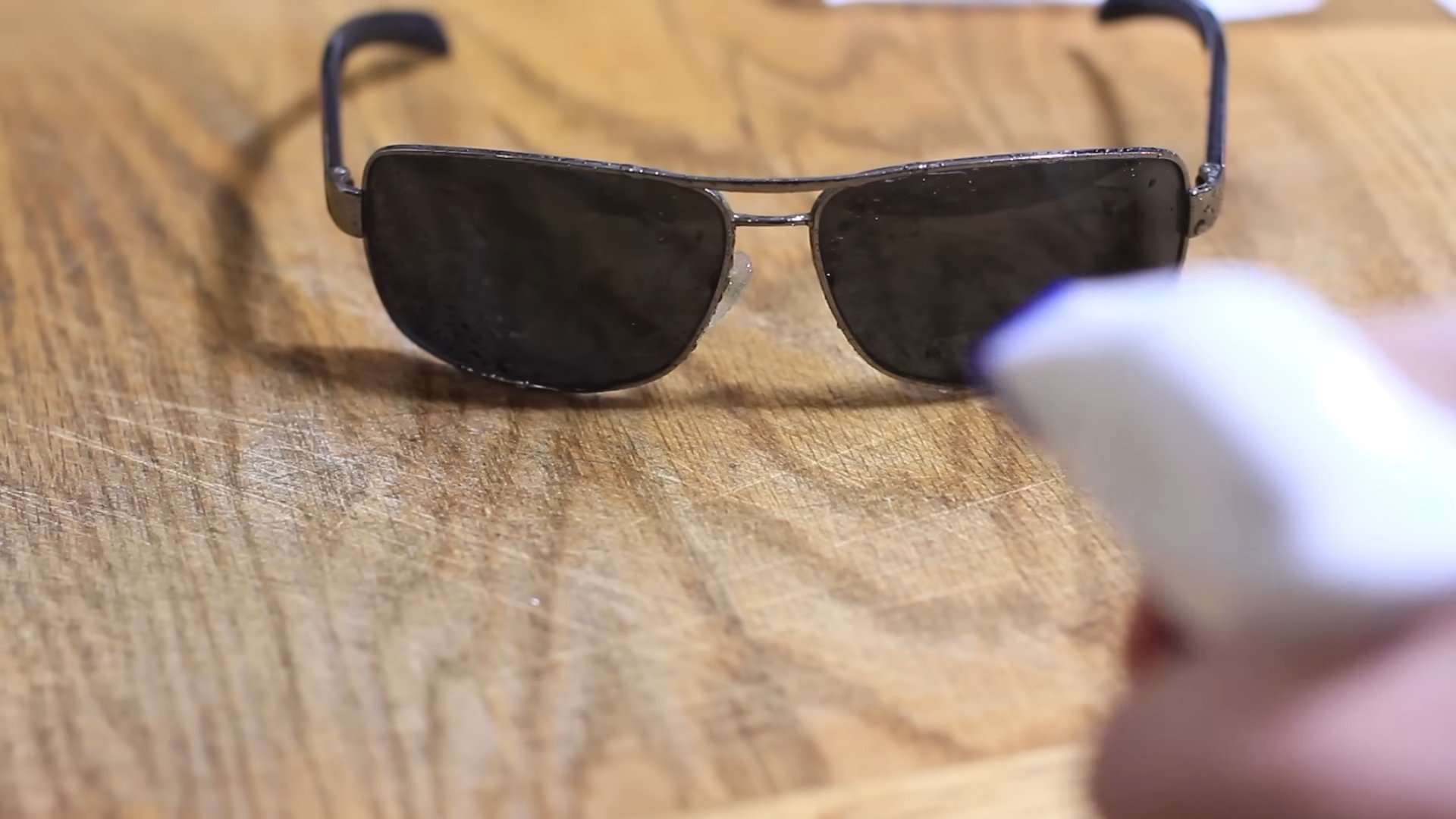
Conclusion
So, there you have it! Growing French beans at home, even without a sprawling garden, is not only achievable but incredibly rewarding. This DIY trick, focusing on container gardening and strategic support systems, unlocks a world of fresh, flavorful beans right at your fingertips. Forget those bland, store-bought beans – imagine the vibrant taste of homegrown French beans, bursting with sweetness and a satisfying snap.
Why is this a must-try? Because it empowers you to control the quality of your food, reduces your carbon footprint by eliminating transportation, and provides a deeply satisfying connection to nature. Plus, let’s be honest, there’s nothing quite like the pride of serving a meal featuring ingredients you’ve nurtured yourself.
But the beauty of this DIY approach lies in its adaptability. Feel free to experiment with different varieties of French beans. Bush beans are naturally compact and require less support, making them ideal for smaller containers or balconies. Pole beans, on the other hand, offer a more abundant harvest but need a taller trellis or support structure. Consider trying purple or yellow varieties for a visually stunning addition to your garden and your plate.
Beyond variety, you can also tailor the growing medium to your specific needs. While a standard potting mix works well, adding compost or well-rotted manure will enrich the soil and provide essential nutrients. For those concerned about drainage, incorporating perlite or vermiculite will improve aeration and prevent waterlogging.
Don’t be afraid to get creative with your support systems. While bamboo stakes and netting are readily available, you can also repurpose old ladders, branches, or even create a teepee structure for your beans to climb. The possibilities are endless!
We wholeheartedly encourage you to embark on this DIY adventure and discover the joy of growing your own French beans. It’s a simple, sustainable, and incredibly rewarding experience. And most importantly, we want to hear about your journey! Share your successes, your challenges, and your creative solutions in the comments below. Let’s build a community of home gardeners, sharing our knowledge and inspiring each other to cultivate a greener, more flavorful world. So, grab your seeds, prepare your containers, and get ready to enjoy the delicious taste of homegrown French beans! We are confident that you will find this DIY project to be both enjoyable and fruitful.
Frequently Asked Questions (FAQ)
What is the best time to plant French beans?
The ideal time to plant French beans is after the last frost in your area, when the soil has warmed to at least 60°F (15°C). French beans are sensitive to cold temperatures, so planting too early can hinder germination and growth. In most regions, this falls between late spring and early summer. You can also start seeds indoors a few weeks before the last frost to get a head start, but be sure to harden them off gradually before transplanting them outdoors. Check your local weather forecasts and planting guides for specific recommendations for your region.
What size container is needed for growing French beans?
The size of the container depends on the type of French beans you are growing. For bush beans, a container that is at least 12 inches in diameter and 12 inches deep is sufficient. For pole beans, which require more space for their roots and climbing habit, a container that is at least 18 inches in diameter and 18 inches deep is recommended. Ensure the container has adequate drainage holes to prevent waterlogging. Using larger containers will generally result in healthier plants and a more abundant harvest.
How often should I water my French bean plants?
French bean plants need consistent moisture, especially during flowering and pod development. Water deeply whenever the top inch of soil feels dry to the touch. Avoid overwatering, as this can lead to root rot. The frequency of watering will depend on the weather conditions, the type of soil, and the size of the container. In hot, dry weather, you may need to water daily. Mulching around the base of the plants can help retain moisture and reduce the need for frequent watering.
What kind of soil is best for growing French beans?
French beans thrive in well-draining, fertile soil that is rich in organic matter. A good potting mix amended with compost or well-rotted manure is ideal. The soil should have a slightly acidic to neutral pH (around 6.0 to 7.0). Avoid heavy clay soils, as they can become waterlogged and hinder root growth. If your soil is heavy, amend it with sand, perlite, or vermiculite to improve drainage.
Do French beans need fertilizer?
While French beans are not heavy feeders, they will benefit from regular fertilization, especially during flowering and pod development. Use a balanced fertilizer with equal amounts of nitrogen, phosphorus, and potassium (e.g., 10-10-10) or a fertilizer specifically formulated for vegetables. Follow the instructions on the fertilizer package for application rates. Avoid over-fertilizing, as this can lead to excessive foliage growth at the expense of pod production. You can also supplement with organic fertilizers such as compost tea or fish emulsion.
How do I support my French bean plants?
The type of support needed depends on whether you are growing bush beans or pole beans. Bush beans are relatively compact and may not require any support, although providing some support can help prevent the pods from touching the soil and rotting. Pole beans, on the other hand, require a trellis, stakes, or other support structure to climb. You can use bamboo stakes, netting, a teepee structure, or even repurpose old ladders or branches. Ensure the support structure is sturdy enough to support the weight of the plants and the developing pods.
What are common pests and diseases that affect French beans?
Common pests that can affect French beans include aphids, bean beetles, spider mites, and slugs. Diseases include powdery mildew, bean rust, and root rot. To prevent pests and diseases, practice good garden hygiene, such as removing weeds and debris, and providing adequate spacing between plants. Inspect your plants regularly for signs of pests or diseases and take action promptly. You can use organic pest control methods such as insecticidal soap, neem oil, or diatomaceous earth. For diseases, ensure good air circulation and avoid overwatering.
How long does it take for French beans to mature?
The time it takes for French beans to mature depends on the variety and the growing conditions. Generally, bush beans mature in 50-60 days, while pole beans mature in 60-75 days. You can start harvesting beans when the pods are firm, crisp, and fully developed but before the beans inside become too large. Regular harvesting will encourage the plants to produce more pods.
Can I grow French beans indoors?
While it is possible to grow French beans indoors, it can be challenging. French beans need at least 6-8 hours of direct sunlight per day, which can be difficult to provide indoors. You will also need to provide adequate support for the plants and ensure proper ventilation. If you choose to grow French beans indoors, use a grow light to supplement natural sunlight and choose a compact bush bean variety.
How do I harvest French beans?
Harvest French beans when the pods are firm, crisp, and fully developed but before the beans inside become too large. Gently snap the pods off the plant, being careful not to damage the stems. Harvest regularly to encourage the plants to produce more pods. Overripe beans will be tough and less flavorful.

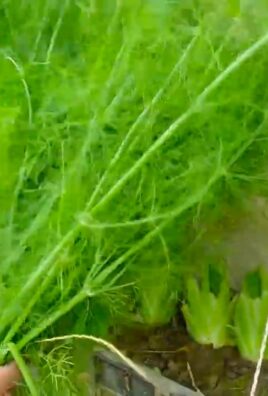
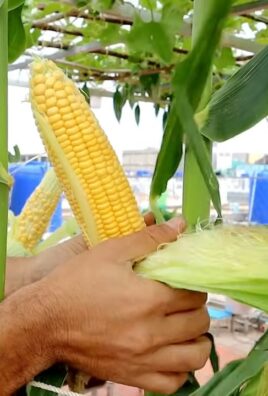
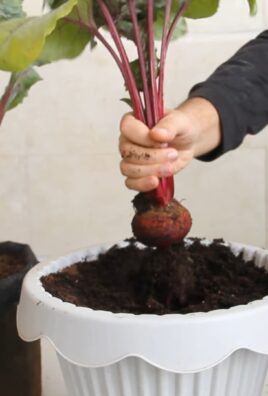
Leave a Comment